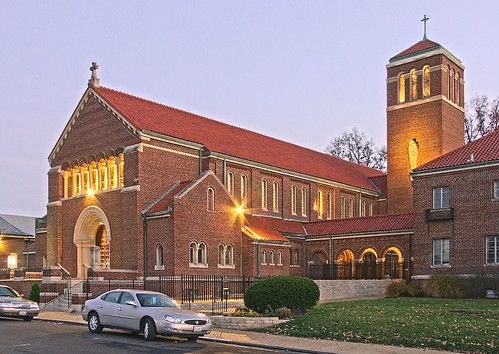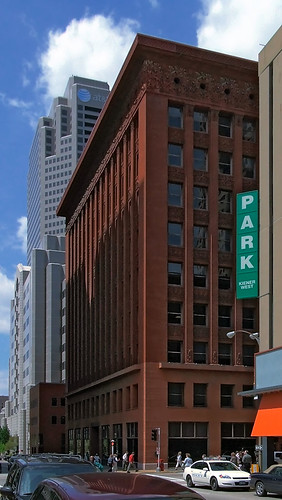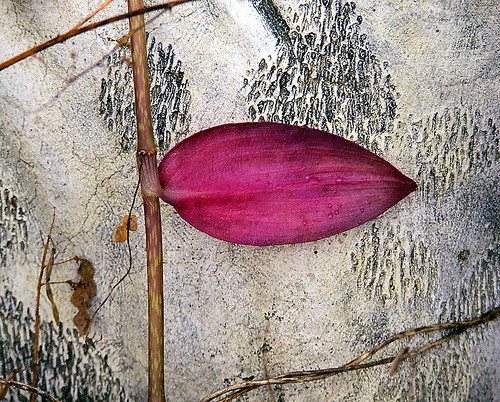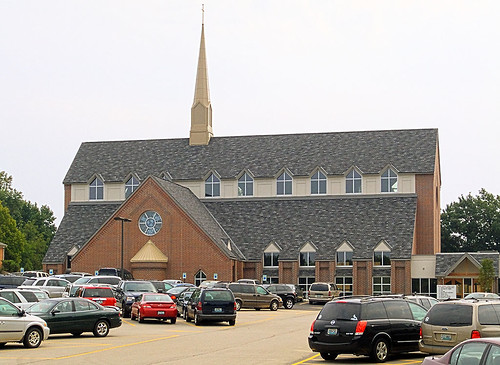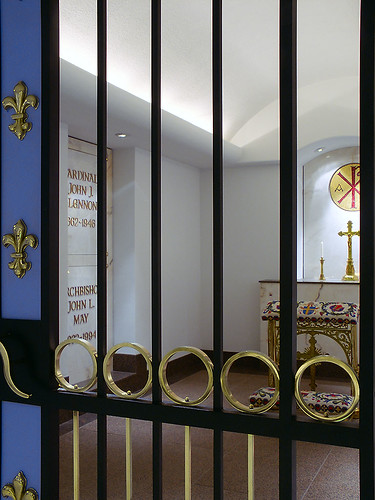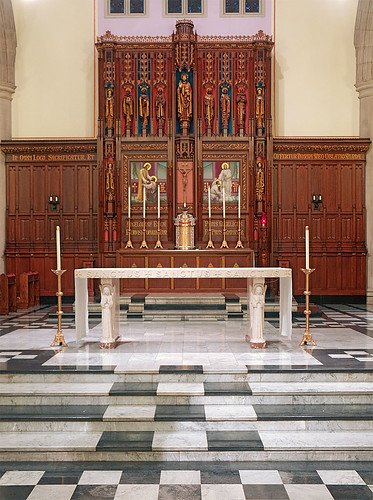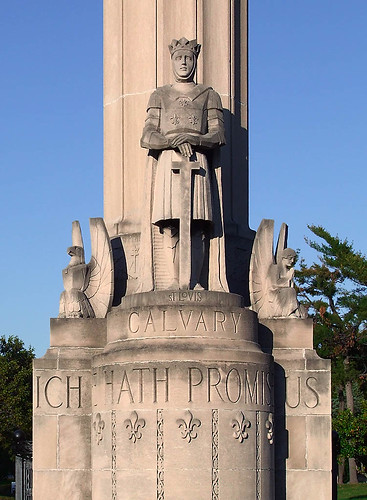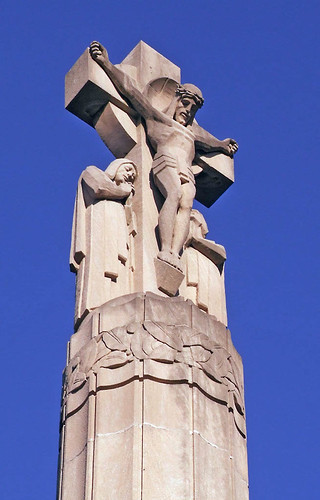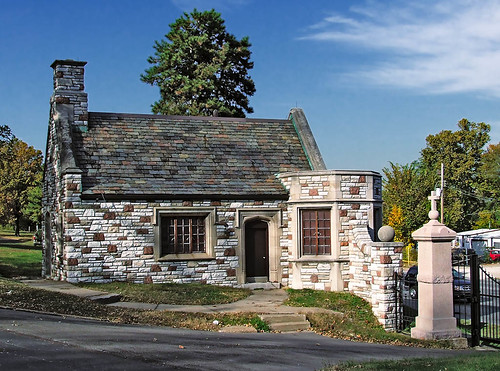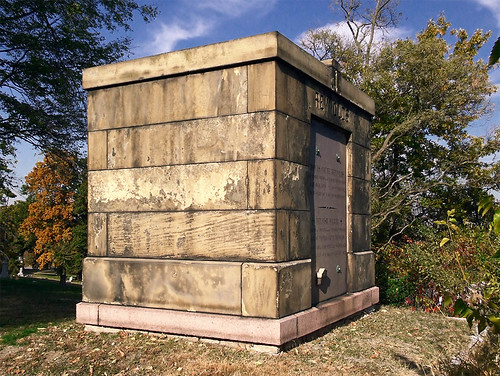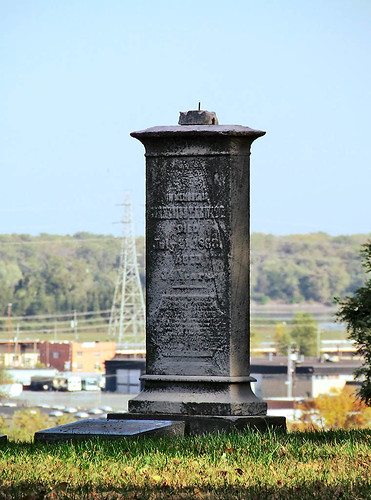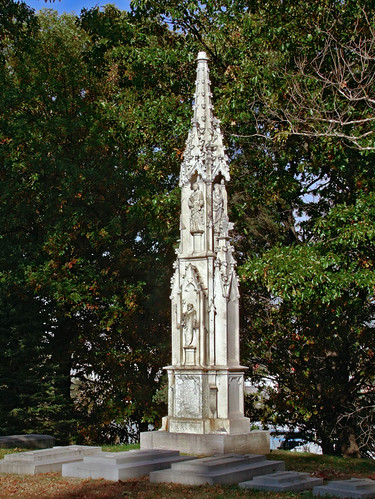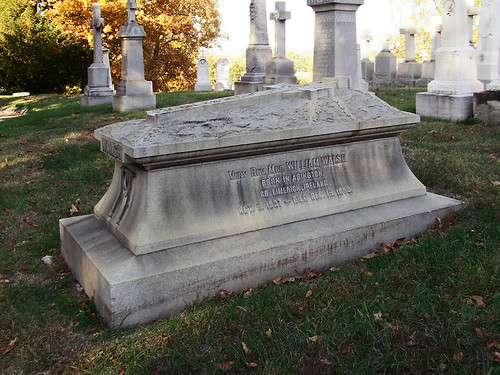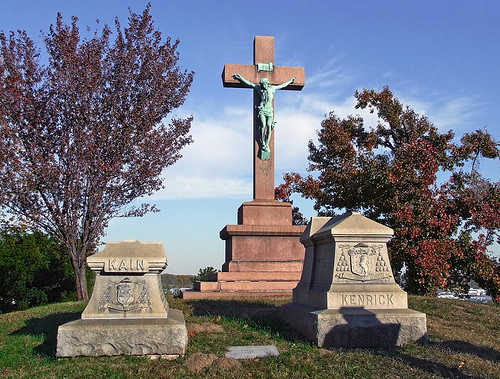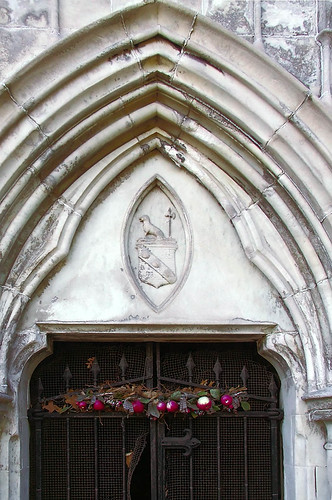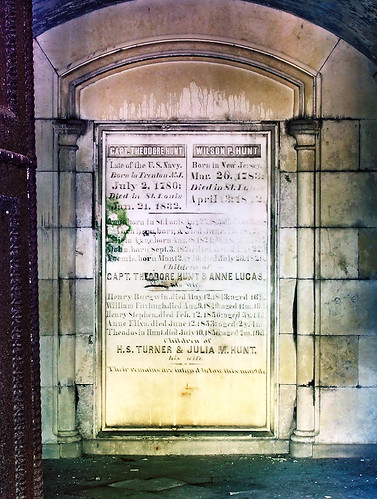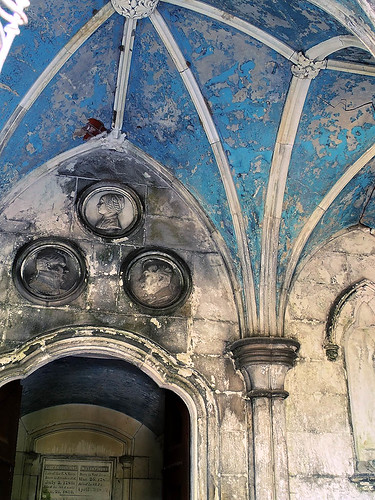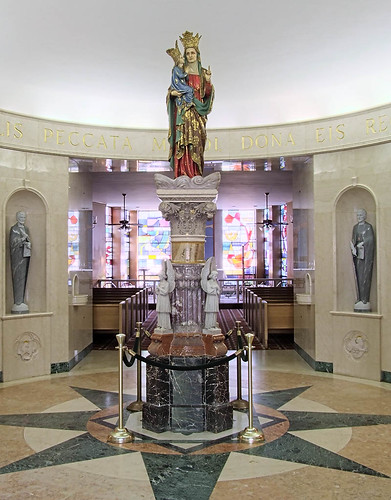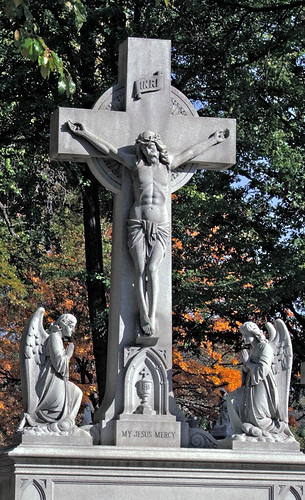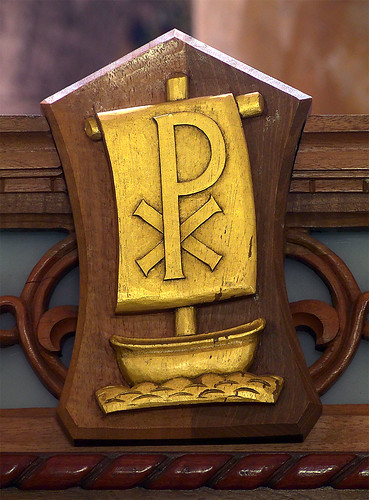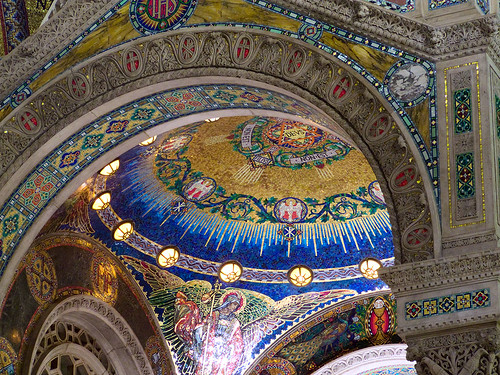HERE ARE TWO local buildings designed by the architect
Louis Henri Sullivan (1856-1924), who is known as the father of modernism, creator of the modern skyscraper, and mentor to
Frank Lloyd Wright (1867-1959). He greatly influenced the Chicago and Prairie styles of architecture.
The relationship between architectural modernism and church architecture is often viewed as ambiguous at best, and is usually condemned as being destructive to the Faith, although in some respects this does not have to be true by necessity. These very earliest examples of architectural modernism can perhaps be instructive, and can serve as a contrast for what came later. Ultimately, we need to distinguish the intellectual and practical development of modern architecture from what later became its intent and meaning.
 (This super-wide-angle view is a photomosaic done rather poorly, so don't look too carefully at it, lest you see where I made mistakes in stitching the various photos together.)
(This super-wide-angle view is a photomosaic done rather poorly, so don't look too carefully at it, lest you see where I made mistakes in stitching the various photos together.)The Wainwright building, in downtown Saint Louis, by the architectural firm of Dankmar Adler and Louis Sullivan, dating from 1891, is one of the world's first tall office buildings. Because Louis Sullivan first discovered and applied the principles of skyscraper design when working on this project, it remains an important historical landmark. According to a
biography:
His solution to the skyscraper problem did not come easily. Frank Lloyd Wright, his principal assistant at the time, remembered how Louis Henry Sullivan struggled over the facade composition, leaving the office for long walks, throwing away sketch after sketch, until finally Louis Henry Sullivan burst into Wright's room and threw a drawing on the table. "I was perfectly aware of what had happened," Wright recalled. 'This was Louis Henry Sullivan's greatest moment-his greatest effort. The 'skyscraper . . . as an entity with . . . beauty all its own, was born".
This building has an internal lightweight steel frame supporting the structure, instead of massive load-bearing walls. This kind of internal structure, novel for its time, allows for more window area as well as for open floor plans. The use of steel in construction became practical in the late 19
th century by the development of the efficient Bessemer Steel Process, and was driven by the huge demand for steel by the new transcontinental railroads. This architectural technology was developed in the building boom that followed the Great Chicago Fire of 1871.
We ought to note that a strong, slender frame, supporting non-structural walls with large windows is
not a modern invention. Rather, it is the Gothic or Catholic style of seven hundred years previous that pioneered this innovation, featuring an external rather than internal structural skeleton. The Gothic technology, however, requires skills in construction which are now hard to replicate.
Adler was an engineer, and designed this building's steel frame and systems, while Sullivan developed the visual elements. Sullivan's problem was to design a building type that was naturally suited to its steel-frame structure. Analogously, a creature with a skeleton, like a monkey, ought to be designed quite differently than a creature with an external shell, like a snail. That we ought to conform our designs to the nature of things is a matter of prudence, and to do anything else is potentially wasteful, dangerous, or even dishonest. Sullivan, in his famous article of 1896,
The tall office building artistically considered, states:
It is my belief that it is of the very essence of every problem that it contains and suggests its own solution. This I believe to be natural law. Let us examine, then, carefully the elements, let us search out this contained suggestion, this essence of the problem.
...All things in nature have a shape, that is to say, a form, an outward semblance, that tells us what they are, that distinguishes them from ourselves and from each other.
In other words, a tall office building ought to
look like a tall office building, and it should be well suited to its purpose of housing a large number of offices on a small patch of ground. The forms of things are
not arbitrary, but rather follow the Natural Law. For commentary on this, see my old article
"Form Follows Function". Later generations of architects took Sullivan's dictum "form follows function" quite out of context and produced structures, (sadly including Catholic churches), that were hostile to faith and beauty.

View looking east, with the
Gateway Arch and
Old Courthouse in the background. For more information on the building,
see this facsimile of its nomination form for the National Register of Historical Places. Aren't the clouds in this photo rather odd looking?
The Wainwright Building was commissioned by Ellis Wainwright, a local brewery owner, financier, and real estate developer, and was intended to house rental office space. Wainwright's name was subsequently raked through the mud by the
very first article in the turn-of-the-century sensationalistic style of journalism called 'muckraking': this middle-class movement of liberal nativists was against the perceived corruption of urban Catholic politicians, and they gave Saint Louis the reputation of being one of the most corrupt cities in the nation. Prosecuted by an ambitious muckraking politician who made his career by attacking businessmen, Wainwright fled first to New York City, and then later to France.
The building now houses offices of the State of Missouri.

One of the building's entrances, surrounded with terra cotta ornament. The doors into this building look like they date from the 1970s (and they probably do).

A view of the highest part of the building. Note the round windows, with florescent light fixtures visible inside. I failed to get a good photo of the ornamented roof edge, which is just cut off at the top of the photo.
Sullivan was rightly famous for his organic ornament. His senior business partner Adler, although a competent architect, quickly delegated façade design to Sullivan, seeing that this younger man was his superior in that art. The Wainwright building has some of the finest exterior ornament in the City, here executed in pottery, or
terra cotta.
Terra cotta (Italian: 'baked earth', from Latin, '
terra cocta') is just baked, unglazed, sculpted clay. It proved to be an excellent material for architectural ornamentation, due to its ease in custom design, suitability for mass-production, low cost, durability, and good looks. It is an excellent, low-cost replacement for carved stone on building exteriors.
Sullivan's admiring pupil, Frank Lloyd Wright, for a while used molded concrete as a substitute for terra cotta, but it proved unsuccessful, since it cannot hold detail as fine as clay, nor was it as cost-effective.
A number of churches in the area have terra cotta ornamentation, including
Saint George in Affton,
Saint Andrew in Lemay, and the
Discalced Carmelite Monastery in Saint Louis County.

Each story of the building has a unique terra cotta design, giving the building nice variety.
The word
story (both in its architectural and literary meanings) comes from the Latin word
historia, or history, and architecturally it originally referred to the tiers of historical painting or sculpture put on the façade of a building. The storeyed ornamentation of the Wainwright Building (although abstract) could be among the very last examples of the ancient tradition of this kind of 'history'. It deserves to be revived.

The heresy of architectural modernism states that a building must be constructed of modern materials with a modern design; this heresy shows the vices of pride, imprudence, and impetuosity. The closely related heresy of architectural historicism states that a traditional building must only be constructed of traditional materials using traditional tools and methods: this heresy denies the virtues of art and science.
Rather, architectural orthodoxy uses the
best materials, tools, techniques, and designs, according to reason, without regard to whether or not they are the latest in fashion. Orthodoxy takes full account of proper authority, reason, and experience and is not enamored of the new for its own sake, but it also does not automatically reject the new. Just because a Gothic or Baroque design might be considered the best for a new church does not mean that it cannot have a sturdy interior steel frame. And just because a new church is to have a steel frame does not mean that it must have a modern design.

Ornamentation around a door. While not a vegetative design like the other terra cotta shown here, it still has an
organic design. Indeed, it seems that all of the world's great architectural traditions, including those of Europe, have an organic quality about them; Bauhaus Modernism is the first break from this long, and perhaps essential, tradition, and this break serves no good purpose.

Adler was a Reform Jew, while Sullivan, despite his name, grew up in a largely atheistic, agnostic, and fringe-Protestant family. Despite these religious shortcomings, Sullivan shows a realistic philosophy in his famous article on tall office buildings. Not like the errors of modernist academic scholars, who invisibly lead souls astray, when architects and engineers make mistakes, thousands die.
That fact is enough to cause rejection of so much fashionable modern subjectivism and artistic emotionalism. Building codes and stick-in-the-mud structural engineers are all that keep us from destruction when we are subjected to the irrational designs of so many contemporary architects.
While the Wainwright building neared completion, the young wife of Ellis Wainwright, Charlotte Dickson Wainwright, died suddenly. Sullivan received the commission for the design of her tomb, constructed in 1892 in the secular Bellefontaine Cemetery in Saint Louis.

The tomb is simple in geometric design, but has nice Sullivanesque decoration. This section of the necropolis is lined with mausoleum tombs in the style of Greek temples, which I think is not quite appropriate in symbolism, although we must consider that this cemetery is known more for wealth than faith.
This proved to be highly influential in early modern architecture, and is usually included in the lists of the best architecture in the City.
Click here for reproductions of the tomb's beautifully executed original architectural drawings, from the
Steedman Architectural Collection of the
Saint Louis Public Library.
Although this is a striking, beautiful tomb, I cannot think that this fine design was much consolation for the loss of Wainwright's beloved wife, nor does it guarantee the repose of her soul.

A view into the window. I took this photo with a tripod taller than myself, and I can't tell what the interior looks like.

The tomb door. This building is unmarked.

Detail of the decoration on the bronze inner door and outer gate. More than a century old, this building is in excellent condition, with the stonework appearing nearly new, and the metal just oxidized.

Detail of the stone carving on the front of the tomb. Note that the Wainwright Building downtown has manufactured terra cotta decoration done in a large scale, while this is fine carving.
This little structure, of sorrowful purpose, is quite beautiful, and certainly could be used as a model for ecclesial architecture or sacred purpose — with however, suitable iconography. Unlike the later modernism of Bauhaus, I don't think that Sullivan's style is iconoclastic in its essence or intent.
Saint Louis has another Adler and Sullivan building, the former
Union Trust Building of 1893, which lacks the fame of these shown here. Although they are most known for their work in Chicago, 'urban renewal' in the 1950s and 1960s led to the untimely, purposeful destruction of many of their buildings in that city.


















